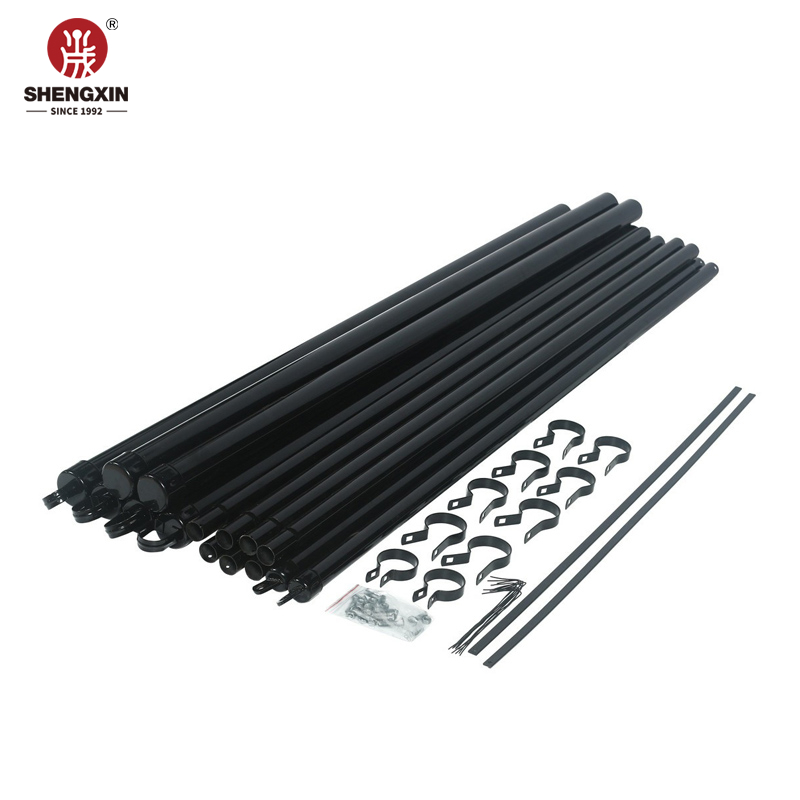
Дек . 10, 2024 00:44 Back to list
Temporary Storage Enclosure Solutions for Efficient Warehouse Management and Security
The Importance of Temporary Warehouse Fencing
In the logistics and warehousing industry, the need for secure and efficient operations cannot be overstated. One crucial element that often goes unnoticed but plays a significant role in safeguarding assets is the use of temporary warehouse fencing. This article explores the various aspects of temporary warehouse fencing, its benefits, and its impact on warehouse operations.
What is Temporary Warehouse Fencing?
Temporary warehouse fencing refers to the installation of portable barriers that create secure perimeters around warehouse sites. These fences can be quickly assembled and disassembled, making them an ideal solution for locations that require flexibility. They are often made from materials such as metal, chain link, or plastic mesh and serve multiple purposes.
Reasons for Utilizing Temporary Fencing
1. Security The most evident benefit of temporary warehouse fencing is its ability to enhance security. Warehouses hold valuable inventory and equipment, making them potential targets for theft and vandalism. By setting up a temporary fence, businesses can deter unauthorized access and ensure that only authorized personnel can enter the premises. This added layer of protection is crucial in reducing losses and enhancing overall security measures.
2. Efficiency in Operations Warehousing operations can be chaotic, with various activities occurring simultaneously—loading and unloading, inventory checks, and equipment maintenance. Temporary fencing can delineate specific areas for different operations, thereby minimizing confusion and enhancing workflow. For instance, a designated area for loading and unloading can prevent pedestrian traffic from interfering with these crucial processes, leading to smoother operational flow.
3. Safety Compliance Safety is a critical concern in any warehouse environment. By using temporary fencing, businesses can create safe zones for workers, thereby adhering to safety regulations and minimizing accident risks. For example, marking off hazardous areas or sections under maintenance with temporary fencing ensures that employees understand where to tread and where to avoid. This proactive approach not only protects employees but also reduces potential liabilities for the company.
4. Flexibility and Adaptability The temporary nature of these fences provides businesses with the flexibility they need in dynamic environments. Warehouses may frequently change their layout, expand operations, or even relocate. Temporary fencing can be easily modified, repositioned, or removed altogether, allowing businesses to adapt quickly to changing needs without substantial investment or long-term commitments.
5. Cost-Effectiveness Investing in permanent fencing can be expensive and may not be feasible for all businesses, especially smaller enterprises. Temporary fencing offers a cost-effective alternative, enabling companies to secure their assets without the financial burden of permanent structures. This is particularly advantageous for short-term projects or seasonal operations that require additional security but do not justify a long-term investment.
temporary warehouse fence

Best Practices for Implementing Temporary Fencing
To maximize the effectiveness of temporary warehouse fencing, businesses should consider the following best practices
- Planning Assess the site to determine the size and type of fence required. Consider factors such as layout, access points, and security risks.
- Quality Materials Choose durable materials that can withstand environmental conditions and resist tampering. Investing in high-quality fencing can save costs on replacements or repairs in the long run.
- Visibility Ensure that the fence is visible to deter unauthorized access. Bright colors or reflective materials can enhance visibility, particularly in low-light conditions.
- Regular Inspections Conduct routine checks to ensure the integrity of the fencing. Any damages or weaknesses should be addressed immediately to maintain security.
- Safety Signage Clearly mark the fenced areas with safety signs and instructions. This helps inform workers and guests about restricted areas or safety protocols.
Conclusion
Temporary warehouse fencing is a vital component of effective warehouse management. Its benefits—enhancing security, promoting safety, ensuring efficiency, and providing flexibility—underscore its importance in the logistics industry. By implementing best practices in temporary fencing, businesses can create a secure and efficient working environment that not only protects their assets but also fosters productivity. In an ever-evolving market, the ability to adapt and respond to changing needs is crucial, making temporary fencing an indispensable tool for modern warehousing operations.
-
868 and 656 Wire Fence Factory & Suppliers - Durable Security Fencing Solutions
NewsJun.24,2025
-
FENC 3D Mesh Fence – Durable, Secure & Easy Installation Custom Quotes & Factory Direct Supply
NewsJun.10,2025
-
Decorative Metal Fencing 3D Supplier – Custom Metal Screen Fencing Manufacturer & Pricelist
NewsJun.10,2025
-
High-Quality Metal Fence Panel - Durable Metal Brown Panel Fence Product & Exporter
NewsJun.10,2025
-
Lawn Chain Link Fencing - Durable & Affordable Solutions Secure Lawn Fences
NewsJun.10,2025
-
Heavy-Duty Metal Fence Posts for Deer Control Factory Direct Supplier
NewsJun.10,2025
